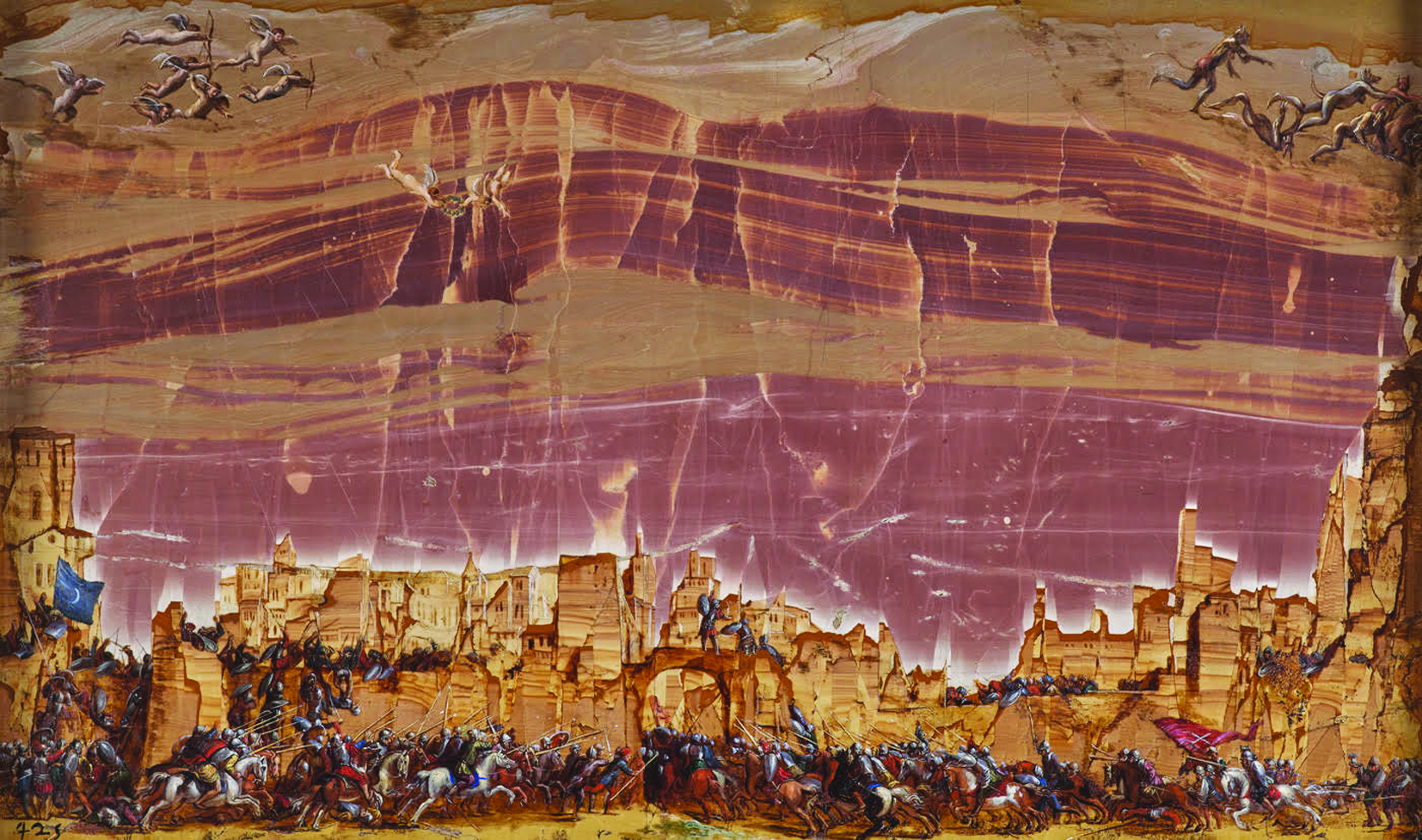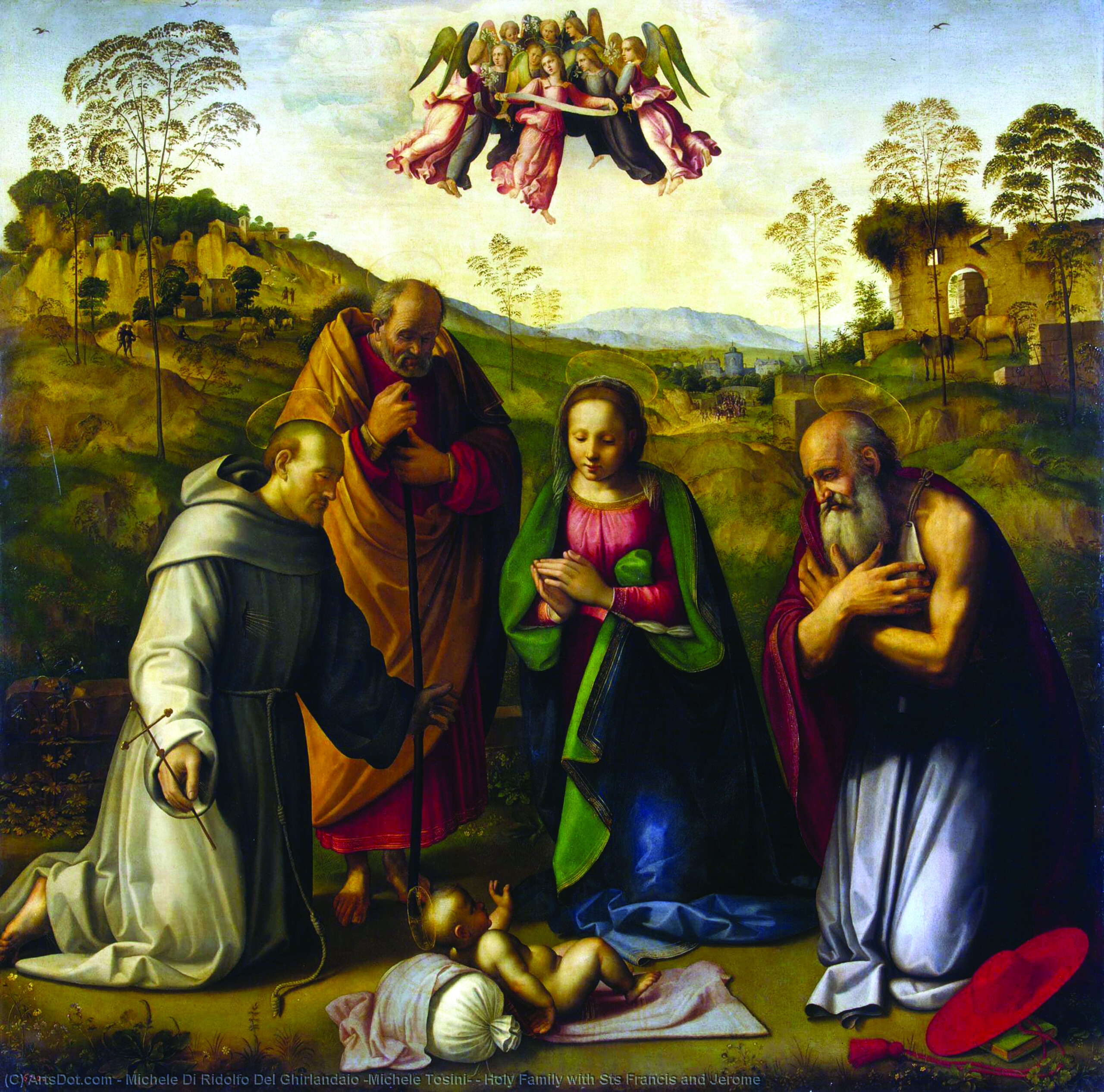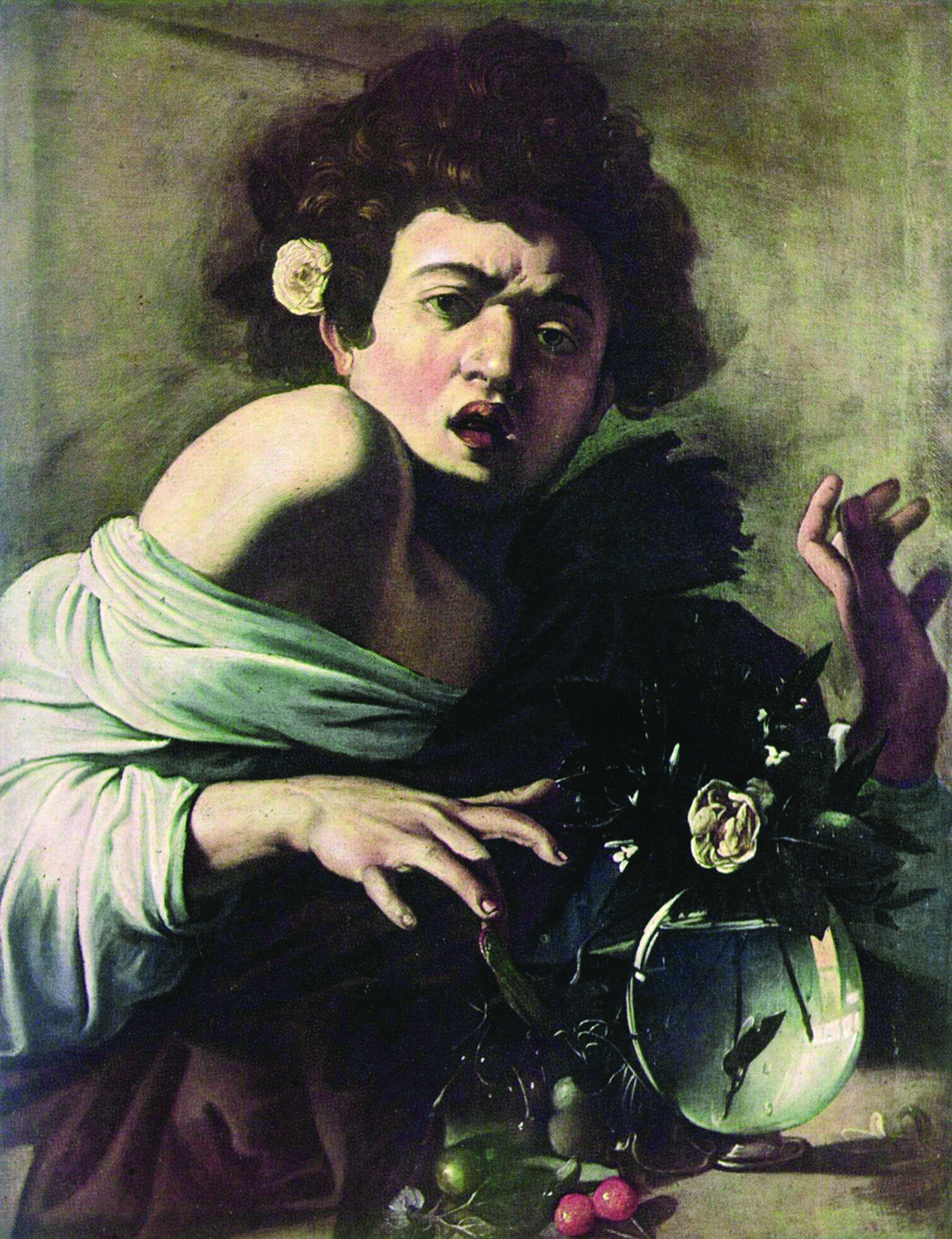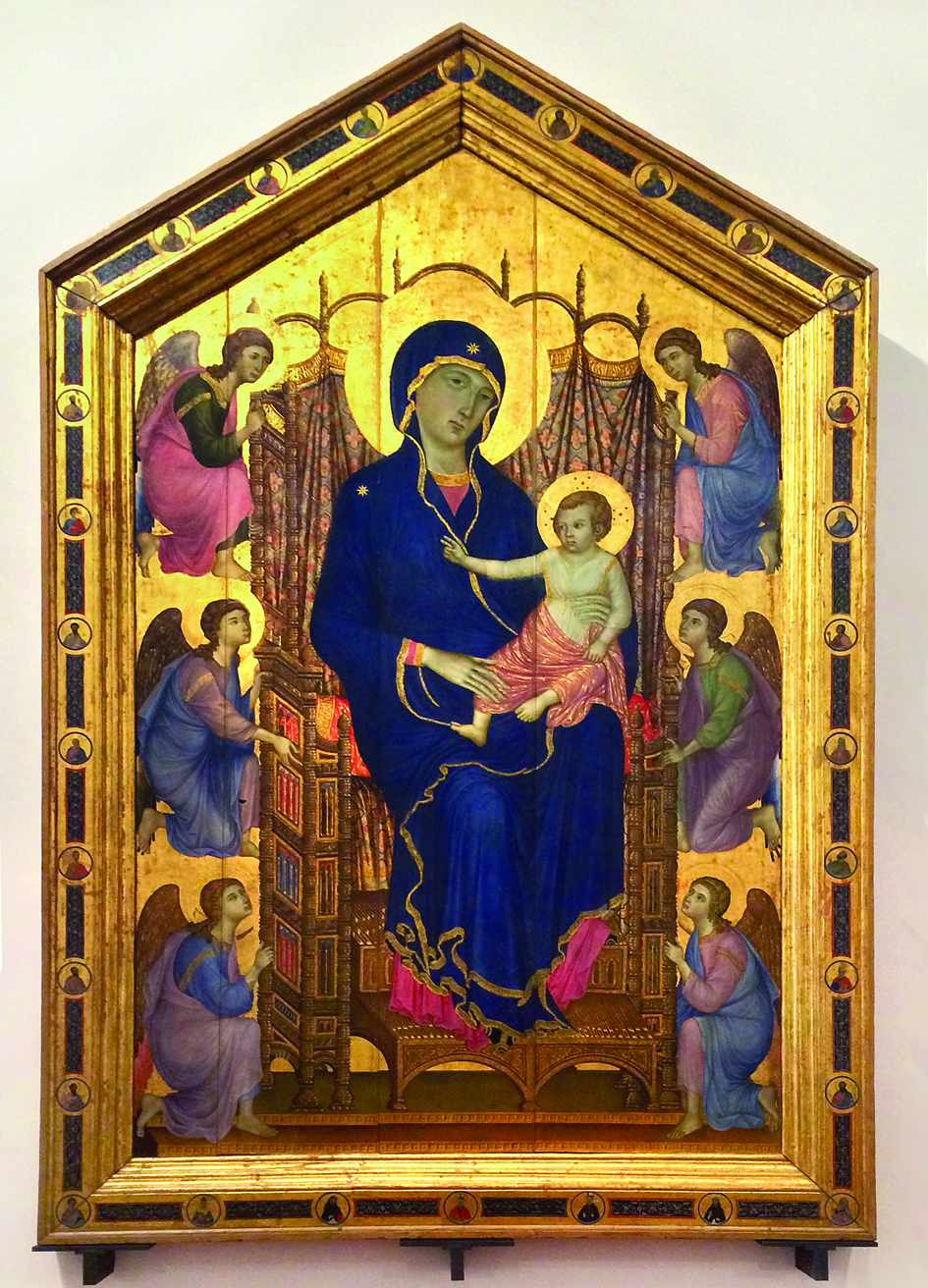Gian Lorenzo Bernini was the most famous and important sculptor in 17th century Europe, but he was also a recognized architect, painter, events organizer, poet and playwright. He was born in Naples, Italy, on December 7, 1598, to a Mannerist sculptor, Pietro Bernini, originally from near Florence, and his wife, Angelica Galante, a Neapolitan. He was the sixth of their 13 children. At the age of eight, Gian Lorenzo accompanied his father to Rome, where Pietro was involved in several high-profile projects for Pope Paul V Borghese, under the important patronage of the Pope’s nephew, Cardinal Scipione Borghese (an unscrupulous art collector). The projects included the Pauline Chapel in the Roman Basilica of St. Mary Major, where Pietro carved the Coronation of Clement VIII (1612-13) as well as the marble relief of the Assumption of the Virgin (1607-10) in the baptistery. For the Barberini Chapel in the Church of Sant’Andrea della Valle, Pietro later carved St. John the Baptist (1616).
After his arrival, except for six months in 1665 when he went to Paris, when his fame was at it height, Gian Lorenzo seldom left the Eternal City. In Rome he received numerous important commissions from seven of the nine Popes who reigned during his long lifetime: Paul V (1605-21), Gregory XV (1621-23), Urban VIII Barberini (1623-44), Innocent X Pamphili (1644-55), Alexander VII Chigi (1655-67), Clement IX (1667-69), and Clement X (1670-76). Gian Lorenzo died in Rome on November 28, 1680, and his easily-overlooked tomb, simply indicated by a pavement marker, is in St. Mary Major.
Thus, as with Caravaggio, most of whose works are also in Rome, it is interesting to follow chronologically in the footsteps of Bernini’s art works. An easier but not chronological route, which takes about 2 hours on foot (or by hopping on and off the no. 62 bus) not including visiting time, starts at the Church of Santa Maria della Vittoria with his Ecstasy of St. Teresa and ends in St. Peter’s Square, with stops in Piazza Barberini to see his Fountain of the Triton and Fountain of the Bees; Sant’Andrea al Quirinale, a church he designed; the Trevi Fountain he inspired; Palazzo Montecitorio which he designed in 1650 and which is the seat of the Italian Parliament today; Piazza Santa Maria sopra Minerva with its elephant obelisk; and Piazza Navona with his Fountain of the Four Rivers and Fountain of the Moor.
Young Bernini’s talent was immediately noticed by the painter Annibale Carracci and by Pope Paul V, and, like his father, Gian Lorenzo soon gained the important patronage of Cardinal Scipione Borghese, rapidly rising to prominence as a sculptor. Most of his early works — many decorative pieces for the garden of Villa Borghese, such as The God Amalthea with the Infant Zeus and a Faun, and several allegorical busts such as the Damned Soul and the Blessed Soul as well as the Bust of Pope Paul V and the more famous full-length statues, Aeneas, Anchises and Ascanius, The Rape of Persephone by Pluto, Apollo and Daphne, and David — are all in the Villa Borghese Museum today.
In 1621, at the age of just 23, Bernini was knighted by Pope Gregory XV. Two years later, when Urban VIII became Pope, he is reported to have told Bernini: “Your luck is to see Cardinal Maffeo Barberini Pope, Cavaliere; but ours is much greater to have Cavalier Bernini alive in our pontificate.” In fact, Urban VIII was Bernini’s strongest supporter, and his long pontificate (1623-44) could be called Bernini’s “Golden Age” because of his prolific production, much of which is in Vatican City today: St. Peter’s Baldacchino, the statue of Charity with Four Children, the Tomb of Urban VIII, St. Longinus, a Bust of Urban VIII, and Charity with Two Children.
Although Bernini fell out of favor during the papacy of Innocent X Pamphili (1644-1655), he designed two of his most famous works during this decade: Ecstasy of St. Teresa and the Loggia of the Founders, both in the Cornaro Chapel in Santa Maria della Vittoria, and the Four Rivers Fountain in Piazza Navona with its ancient Egyptian obelisk topped by a bronze dove with an olive branch in its beak, the symbol of the Pamphili family. The four great rivers then known — the Ganges, the Danube, the Nile, and the Plate — are represented by giants. The Nile’s veiled head symbolizes the river’s unknown source, but there’s also the legend that the veil conveys Bernini’s dislike for the nearby Sant’Agnese in Agone Church, designed by his rival, Borromini. Similarly, the figure of the Plate, cringing with arm upraised, is supposed to express Bernini’s fear that the church will collapse and destroy his fountain. Luckily, these old wives’ tales have no factual basis, because Bernini had completed his fountain before Borromini even started work on his church.
Under Pope Alexander VII Chigi (1655-67), Bernini regained a major role in the decoration of St. Peter’s, leading to his design of the piazza and the colonnade in front of the basilica. Like his predecessor, Alexander VII wanted an ancient Egyptian obelisk erected in a major Roman piazza — in this case Piazza Maria Sopra Minerva — so in 1665 he commissioned Bernini to create a sculpture to support a small obelisk.
The sculpture of a baby elephant bearing the obelisk on his back was created by one of Bernini’s students, Ercole Ferrata, and finished in 1667. A popluar anecdote concerns the elephant’s smile. To find out why it’s smiling, the viewer must head round to the rear of the animal to see that its muscles are tensed and its tail is shifted to the left as if it were defecating. The animal’s rear is pointing directly at the office of Father Giuseppe Paglia, a Dominican friar who was one of Bernini’s main antagonists.
Bernini also continued to be held in high regard by Popes Clement IX and X. The Ponte Sant’Angelo was completed in 134 A.D. by the Roman Emperor Hadrian to span the Tiber from the city center to his newly-constructed mausoleum, transformed in the Middle Ages into a a papal fortress and prison. During the Middle Ages and the Renaissance, pilgrims crossed the bridge to reach St. Peter’s. In 1669, Pope Clement IX commissioned Bernini to restore it.
Bernini’s project, one of his last, called for 10 angels, each holding an instrument of the Passion. Bernini personally finished only two: Angel with the Crown of Thorns and Angel with the Superscription, both of which are in the Church of Sant’Andrea delle Fratte today.
His last major project was probably the macabre Tomb of Alexander VII (1671-78) in St. Peter’s Basilica to the left of his baldacchino.
According to the Metropolitan Museum’s press release: “To visualize life-size or colossal marbles, Bernini began by rapidly modelling small clay sketches. Fired as terracotta, these studies are bold, expressive works in their own right. Together with related drawings, they preserve the first traces of Bernini’s fervid imagination and unique creative process that evolved into some of the most famous and spectacular statuary in Rome…” On at the Metropolitan in New York until January 6, 2013, and then at the Kimbell Art Museum in Forth Worth, Texas, from February 3 through April 14, Bernini Sculpting in Clay features approximately 40 of these terracotta sketch models (almost all of those surviving, including 15 from the Harvard Art Museums, the largest collection of Bernini terracottas in the world), shown together for the first time, with 30 drawings. Many have never been seen in the United States before, especially those loaned for this occasion from the Louvre, the Vatican Museums, the Museum of Palazzo Venezia in Rome, the Uffizi in Florence, the Victoria and Albert Museum in London, and the Royal Collection at Windsor Castle.
“This exhibition is the first to retrace Bernini’s unparalleled approach to sculptural design and his use of vigorous clay studies and drawings in directing the largest workshop of his time… Occasionally, Bernini presented these models to his patrons to win commissions or to his assistants to use as guides in carving. Highlights on display include a dynamic terracotta model for the thirsty lion (ca. 1649-50) at the base of the Four Rivers Fountain, the series of models for the Angel with Superscription (1668-69); the Moor (1653), Bernini’s largest surviving model; and drawings and clay sketches for the Kneeling Angels (1672) on the Altar of the Blessed Sacrament in St. Peter’s Basilica.
Recommended reading: Bernini: His Life and His Rome by Franco Mormando, an associate professor of Italian at Boston College, University of Chicago Press, 2012, $35.00. The author asserts that this biography is the first book in English about Bernini the man rather than about his work.






Facebook Comments